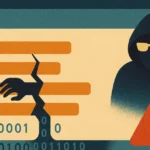An Overlooked Risk in SaaS Security
SaaS apps have become the backbone of modern business operations, with enterprises relying on platforms like Microsoft 365, Salesforce, and Zendesk to manage everything from communication to customer support. As organizations adopt more SaaS apps, managing access, security, and compliance across these platforms has become increasingly complex.
While IT and security teams focus on securing apps as a whole, a critical gap remains—understanding and securing tenants within those apps. Traditional security solutions often fail to account for the fact that each SaaS app can contain multiple tenants, each with different administrators, access controls, and security postures. Without visibility into these tenants, organizations face increased risks from unmanaged accounts, external access, and compliance blind spots.
The challenge lies in visibility. Traditional security solutions apply policies at the app level, leaving the underlying tenants unmonitored and unmanaged. This can lead to compliance failures, unauthorized access, and lingering accounts long after employees leave. Savvy solves this challenge by providing tenant-level visibility and control, enabling security teams to secure SaaS environments at a granular level.
By mapping users to their respective tenants, organizations can apply precise access policies, detect lingering accounts, and strengthen compliance efforts—ensuring that every tenant is as secure as the apps they belong to. A tenant in a SaaS environment is not just another user or account; it represents a distinct group, often a separate business unit, subsidiary, or even an external partner, operating within the same SaaS application. While security teams might believe they have control over their SaaS footprint, many remain blind to the risks associated with multi-tenant apps.
What Is a SaaS Tenant?
A SaaS tenant is an isolated entity within a shared app environment, housing a unique set of users, roles, and data. While SaaS apps are designed to support multiple users, tenants act as distinct silos, allowing different organizations or business units to operate independently within the same software.
Tenants are particularly common in enterprise-grade SaaS platforms. A multinational company might use Salesforce across multiple subsidiaries, each with its own customer data and sales processes. Microsoft 365 tenants might separate regional offices or divisions. Zendesk support tenants could belong to different customer service teams or even external vendors.
The challenge arises when organizations do not differentiate between these tenants. While an IT team may offboard an employee from a corporate-owned tenant, they may still have access to an externally managed or third-party tenant that no one is tracking. Understanding the relationship between tenants and their users is critical to enforcing proper access controls and security policies.
Security Considerations for Multi-Tenant Environments
Unauthorized Access Risks
Without visibility into tenants, security teams lack control over who has access to what. A former employee could still retain access to a third-party managed tenant, creating a security loophole. If the organization assumes offboarding at the app level is sufficient, they leave themselves exposed to insider threats and compliance violations.
Compliance Challenges
Security regulations such as GDPR, HIPAA, and SOC 2 require organizations to implement granular access controls and restrict unnecessary data exposure. However, most compliance frameworks assume organizations have clear ownership over their SaaS environments. Without tenant-level oversight, companies may be violating data protection mandates without realizing it.
Broad vs. Granular Security Policies
Most traditional security tools apply policies at the app level, meaning all users within the same SaaS app are treated equally. This approach does not account for different risk levels between tenants. For example, a financial services company may use a CRM across multiple business units, each with different compliance needs. Applying a single security policy to the entire app overlooks tenant-specific risks and business-specific access requirements.
Solving the Tenant Identification Problem
Savvy introduces Tenant-Level Understanding, a breakthrough in SaaS security that enables organizations to:
1. Automatic Tenant Discovery
Savvy automatically maps users to their respective tenants, identifying both corporate-owned and externally managed tenants. This ensures organizations understand their full SaaS footprint, including tenants they did not previously know existed.
2. Granular Policy Control
Security teams can now apply policies per tenant, rather than across an entire app. This means:
- Sensitive tenants, such as those housing financial data, can have stricter access controls.
- External or partner-owned tenants can be monitored to ensure proper security measures are in place.
- IT teams can differentiate between high-risk and low-risk tenants and take targeted remediation actions.
3. Real-Time Monitoring and Remediation
Savvy continuously tracks who has access to which tenants and identifies security gaps such as SSO bypass, missing MFA, and weak credentials. This allows security teams to proactively close identity loopholes before they become entry points for attackers.
Savvy Offers Policy-Based Security at the Tenant Level
Why Tenant-Aware SaaS Security is a Game-Changer
The introduction of tenant-level security redefines SaaS security by enabling organizations to go beyond app-wide policies and apply precision controls where they matter most.
Use Case: Financial Services Company & Multi-Tenant CRM Access
A global financial institution uses Salesforce across its wealth management, retail banking, and insurance divisions. Each division operates as a separate tenant but under the same SaaS application. Without tenant-level visibility, security teams cannot enforce division-specific access policies—meaning an employee from retail banking might still have access to insurance division data long after they change roles.
With Savvy, security teams can:
- Identify each Salesforce tenant and the users assigned to it.
- Apply unique access controls per tenant (e.g., stricter authentication for wealth management).
- Offboard users fully across all tenants when they leave the company.
Key Benefits of Tenant-Level Understanding
- More Precise Access Control: Ensures employees only have access to the tenants relevant to their role.
- Stronger Compliance Alignment: Helps meet regulatory requirements by enforcing security measures at a granular level.
- Reduced Security Risk: Prevents former employees or external partners from retaining access to sensitive tenants.
Most Popular SaaS Platforms and Their Tenant Structures
Microsoft 365 Tenant Management – Understanding how Microsoft’s tenant model impacts security and compliance.
Google Workspace Tenant Visibility – Managing unique Google tenants across business units.
Salesforce Multi-Tenant Security – Controlling tenant access in a CRM used across multiple divisions.
AWS Multi-Tenant Security – Best practices for securing shared AWS environments.
Azure Active Directory Tenant Security – Ensuring proper access controls across multiple Azure tenants.
Zoom Tenant Policies – Applying tenant-based security controls in video conferencing environments.
ServiceNow Tenant Visibility – Customizing security policies per tenant in an ITSM environment.
Get Tenant-Aware Saas Security
SaaS security is evolving, and app-level security policies are no longer enough. Organizations must gain deep visibility into their SaaS tenants, differentiate between internal, external, and partner-owned tenants, and enforce policies that align with the unique security risks of each tenant.
Savvy’s Tenant-Level Understanding delivers exactly that—helping security teams discover, monitor, and secure every tenant within their SaaS ecosystem. By closing this critical visibility gap, organizations can reduce risk, improve compliance, and ensure true identity governance across their cloud apps.


